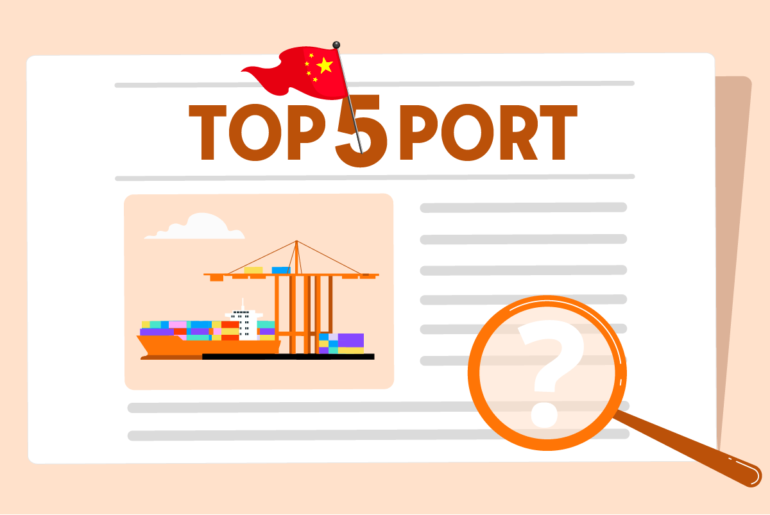What are the Top 5 Ports in China 2022?
China is hosted in some of the world’s busiest, largest, and most complex ports, playing a significant role in international trade. The country continuously invested in its maritime infrastructure over the years, building new ports and upgrading existing ones to create the proper environment for the country’s trade. Let’s dive into the biggest ports in China:
1. Shanghai Port
Shanghai Port is located at the mouth of the Yangtze River on the east coast of China. It is the largest port in the world based on container throughput. In 2022, Shanghai handled a total of 47.3 million TEUs 2022, which makes Shanghai Port the main player in international trade.
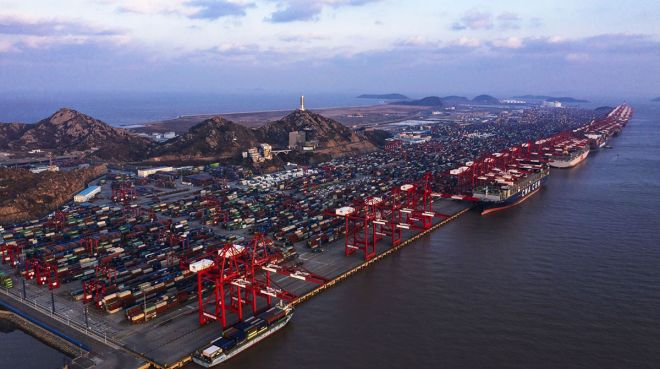
2. Ningbo-Zhoushan Port
Ningbo-Zhoushan Port is located in the Yangtze River Delta region, south of Shanghai. The Ningbo-Zhoushan Port ranks as the 2nd biggest in China, handling 33.35 million TEUs in 2022. Although it’s the 2nd biggest port in China, it is the busiest in terms of cargo tonnage thanks to its advantageous location, the Yangtze River Delta economic zone. It is stated that Ningbo-Zhoushan Port handled more than 1.22 billion metric tons of cargo in 2021.
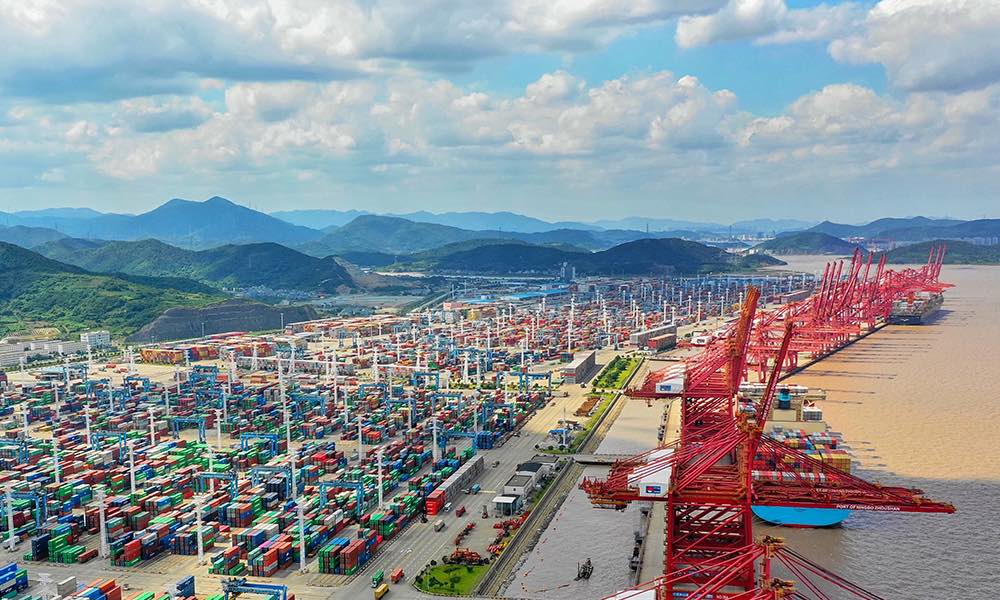
3. Shenzhen Port
Shenzhen Port is located in the Pearl River Delta region, the southern province of Guangdong. The Shenzhen Port is the third biggest port in China, handling 30.0356 million TEUs in 2022. It is also known for advanced technologies for the hub operations, such as; automated cranes that can operate without human force, 5G networks that improve communication and data transfer between different parts of the port, the blockchain technology that allows for secure and tamper-proof recording of data related to container movement and transactions, artificial intelligence (AI) that analyses data related to weather, cargo demand, and other factors to optimize port operations and reduce delays, and internet of things (IoT) that improves visibility and control over its operations.

4. Port of Qingdao
Port of Qingdao is located in Qingdao, Shandong Province in China. Compared to last year, it moved up a row and became the 4th biggest port in China by handling 25.670 million TEUs in 2022. That means an increase of 8.3% from 2021. Authorities aim to develop the port according to the growing commercial needs by implementing high tech into the Port of Qingdao and investing such as automated terminal operations, radio frequency identification (RFID) technology, artificial intelligence (AI), and blockchain technology. The Port of Qingdao has achieved two significant milestones, becoming the first 5G intelligent port and hydrogen-powered port in the world.
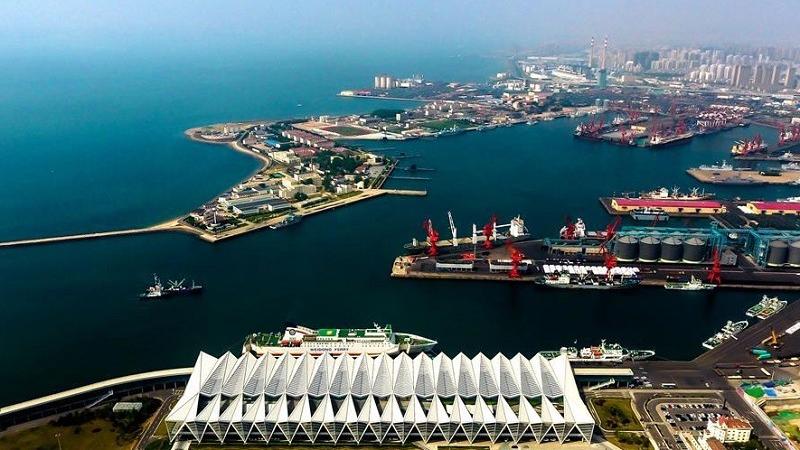
5. Guangzhou Port
Guangzhou Port is also located in the Pearl River Delta region, Guangdong province. The Guangzhou Port is China’s fifth-largest port handling 24,600,000 TEUs in 2022. It is one of the majors in China and the world for trade with Southeast Asia and has been investing in infrastructure upgrades to improve its competitiveness, such as; a new infrastructure development plan announced by Guangzhou port to create a modern infrastructure system that can compete on a global level. The project is expected to be completed by 2035, with the aim of creating a high-quality infrastructure that can meet the demands of modern shipping and trade. In addition, Guangzhou Port Group has taken a big step toward becoming a part of Guangdong province’s port consolidation plan by acquiring a 52.51% stake in Zhongshan Port & Shipping Enterprise Group.
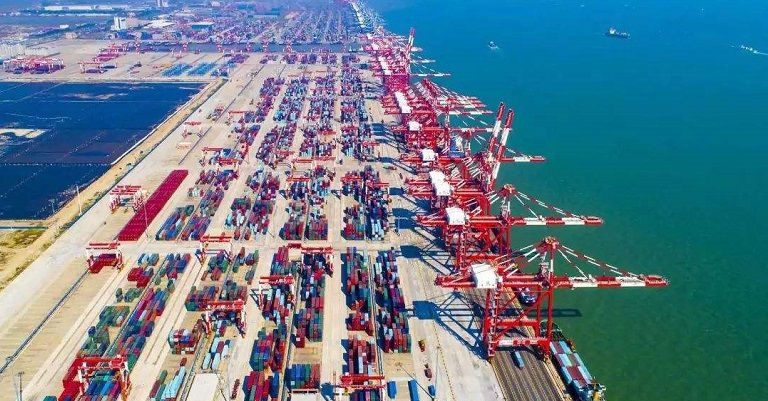
In conclusion, China’s ports are vital to the country’s economy, playing an essential role in facilitating the movement of goods and materials within the country and across international borders. These ports also serve as crucial gateways for the global shipping industry, connecting Asia with Europe, North America, and other parts of the world. With China’s continued growth and development, these ports are expected to experience a significant increase in traffic and investment in the coming years, further strengthening their position as some of the busiest and most important ports in the world. As of it mentioned before, the ongoing developments in modern infrastructure and advanced technologies are highly expected to help enhance the efficiency and competitiveness of these ports, enabling them to handle the ever-growing demand for global trade and commerce.

